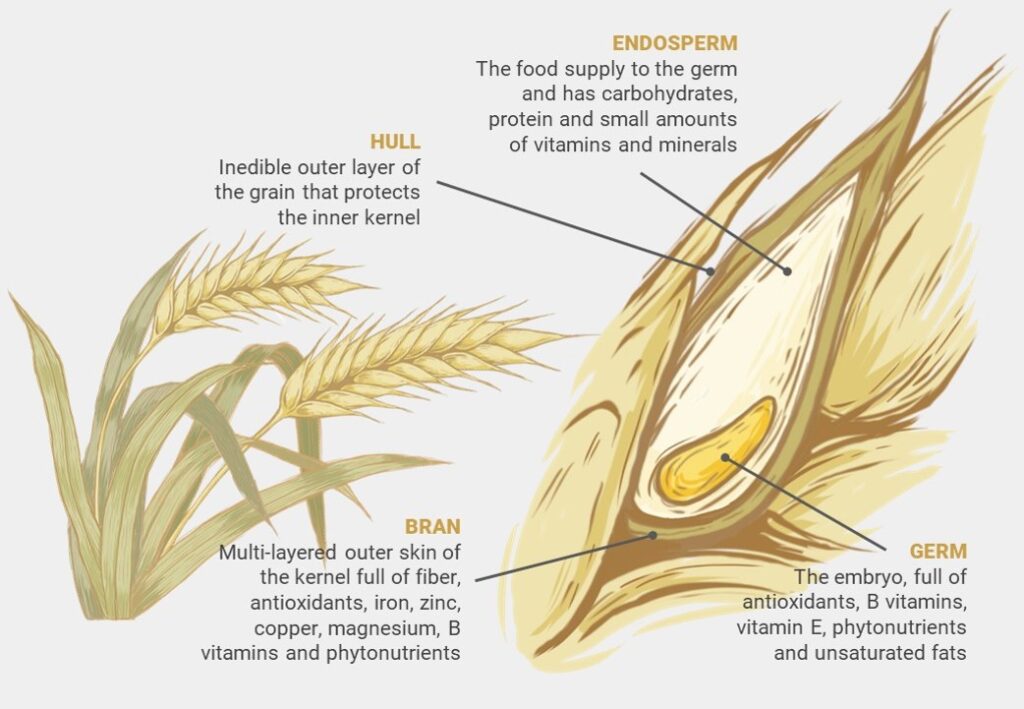Myriad benefits of fermented rice bran

There are several layers in a whole grain of rice. The hull, which is the outermost layer is removed to produce brown rice. Further processing and polishing of brown rice will strip down the rice bran and germ to produce white or parboiled rice. During this process, unnecessary loss of nutrients will occur as rice bran is a functional food that is high in nutritional value.
Rice bran serves as an excellent source of essential nutrients being rich in manganese and phosphorus for healthy bones and brain cell communication. It is also a good source of iron and magnesium. Rice bran also contains vitamins, particularly vitamins B5 and B6. Vitamin B5 plays an important role in brain function in melatonin production for mental alertness and improves the quality of sleep. Vitamin B6 helps with nerve communication and plays a role in red blood cell production.
The rice bran we use must undergo a process of stabilisation to avoid rancidity and degradation of nutrients. After the rice bran is stabilised, the process of fermentation will then be initiated by our proprietary blend of probiotics. Our proprietary fermentation method increases rice bran’s original beneficial properties by many folds, gaining beneficial metabolites such as phyto-antioxidant compounds, polyphenols and various organic acids. Fermented rice bran can increase its antioxidant activity by detaching its phenolic compounds from molecular bonds thereby increasing its availability to be utilised in our body.
In recent years, more evidence-based studies are carried out to determine the benefits of fermented rice bran. These studies have explored the effect of fermented rice bran on different types of cancer and cardiovascular diseases with all of them showing beneficial outcomes. A study has pointed out the possibility of total phenolics and gamma-tocotrienol in rice bran having a positive correlation with reduced colorectal cancer cell growth. Fermented rice bran is also shown to be able to promote cell death apoptosis of abnormal cells, shrinking cancer cells.
Some studies have shown that fermented rice bran has anti-inflammatory properties by suppressing the inflammatory cell infiltration and inflammatory cytokine production, especially in cardiovascular diseases and cancer. Downregulation of inflammation is especially important, as the body will only start to heal when the inflammation is stopped. The anti-inflammatory properties of fermented rice bran will also help with people suffering from autoimmune diseases and can speed up the healing process of infections and injuries.
The soluble dietary fiber from fermented rice bran acts as a prebiotic that nourishes the probiotics in KISEKI. A healthy colony of probiotics will, in turn, increase the yield of high- quality metabolites in KISEKI resulting in a more effective concoction for consumers. On that note, we encourage our consumers to include soluble fiber in the diet as it will create an optimal environment for the good bacteria in our digestive system. You can get soluble fibers in various fruits and vegetables. A few examples of foods that are higher in soluble fibers are legumes, beans, flax and chia seeds, fruits, avocados and root vegetables. Like all other raw ingredients in our product, the type of rice bran we use are also organic and non- GMO. We believe that rice bran has strong chronic disease fighting properties and contributes a lot to the healing of consumers of KISEKI, especially those with chronic low- grade inflammation diseases such as asthma, arthritis, sinusitis, diabetes, IBS and chronic fatigue syndrome.
References:
- Saji, N., Francis, N., et al. 2019. Rice Bran Derived Bioactive Compounds Modulate Risk Factors of Cardiovascular Disease and Type 2 Diabetes Mellitus: An Updated Review. Nutrients. 11, 2736. Accessed from https://www.ncbi.nlm.nih.gov/pmc/articles/PMC6893409/.
- Sohall, M., Rakha, A., et al. 2017. Rice bran nutraceutics: A comprehensive review. Critical Reviews in Food Science and Nutrition. 57 (17), pg. 3771-80. Accessed from https://pubmed.ncbi.nlm.nih.gov/27015585/.
- Yu, Y.,Zhang, J., Wang, J. & Sun, B. 2019. The anti-cancer activity and potential clinical application of rice bran extracts and fermentation products. Royal Society of Chemistry. Accessed from https://www.researchgate.net/publication/333688680_The_anti-cancer_activity_and_potential_clinical_application_of_rice_bran_extracts_and_fermentation_products.
- Zarei, I., Brown. D.G., Nealon, N.J. & Ryan, E.P. 2017. Rice bran metabolome contains amino acids, vitamins and cofactors and phytochemicals with medicinal and nutritiona properties. PMC. Accessed from https://www.ncbi.nlm.nih.gov/pmc/articles/PMC5453916/
- Sapwarobol, S., Saphyakhajom, W. & Astina, J. 2021. Biological Functions and Activities of Rice Bran as a Functional Ingredient: A Review. Sage Journal. Accessed from https://journals.sagepub.com/doi/full/10.1177/11786388211058559.


